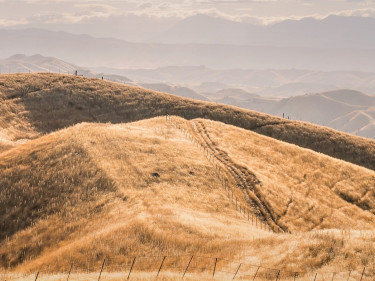Fire seasons
Fire seasons are used to inform people about the requirements for or restrictions on lighting fires in the open air, and to manage the use of fire to protect communities from the consequences of unwanted fire.
Fire and Emergency can declare or revoke a prohibited or restricted fire season in an area, and uses its Fire seasons, prohibitions and restrictions policy and associated processes to manage this.
Fire seasons are applied to geographic zones based on:
- the fire environment (fuel types, curing, weather, topography, historic trends)
- fire climatic zones
- topographical boundaries/features (rivers, roads, coast lines, forest and national park boundaries)
- fire control considerations.
One of three types of fire season is in force at any time in an area or zone:
|
Open fire season |
|
Fires may be lit in open air, without restriction. Applies whenever there is not a prohibited or restricted fire season in place. |
|
Restricted fire season |

|
Lighting a fire is riskier than usual. A fire permit is required for most fire types and may also have specific conditions to make sure fires can be safely lit and remain under control. |
|
Prohibited fire season |

|
Lighting fires in the open air is not permitted. Existing fire permits are suspended, though fire permits may still be granted in exceptional circumstances. |
It is important that you know what the current fire season is and understand how you can comply with the safety requirements, before lighting any type of fire.
Check before you light with our simple 3-step tool that tells you whether you can light your fire or do your outdoor work safely, what the fire risk is and what you should do to stay safe.
Public Conservation Land
Use these tables as the authorised fire types on public conservation land (PCL) in a restricted or prohibited fire season.
Note: PCL is always in a restricted fire season, unless moving into a prohibited season in alignment with the surrounding land. This decision to move into or out of a prohibited fire season is made by Fire and Emergency New Zealand.
- Authorised fire types on PCL in a restricted fire season
- Authorised fire types on PCL in a prohibited fire season
Fire danger
The fire weather index system provides up-to-date weather information about fire danger.
We use the fire weather system to predict the chances of a fire starting, spreading, and causing damage on a particular day. This is one of the factors we consider when deciding the fire season status and whether it is appropriate to issue a fire permit or not.
If you're interested in seeing what the fire weather is in your area, visit the Fire and Emergency New Zealand fire weather website.
But remember – knowing the fire weather does not excuse you from needing a rural fire permit. Please check the fire season status before lighting any fire in open air.














